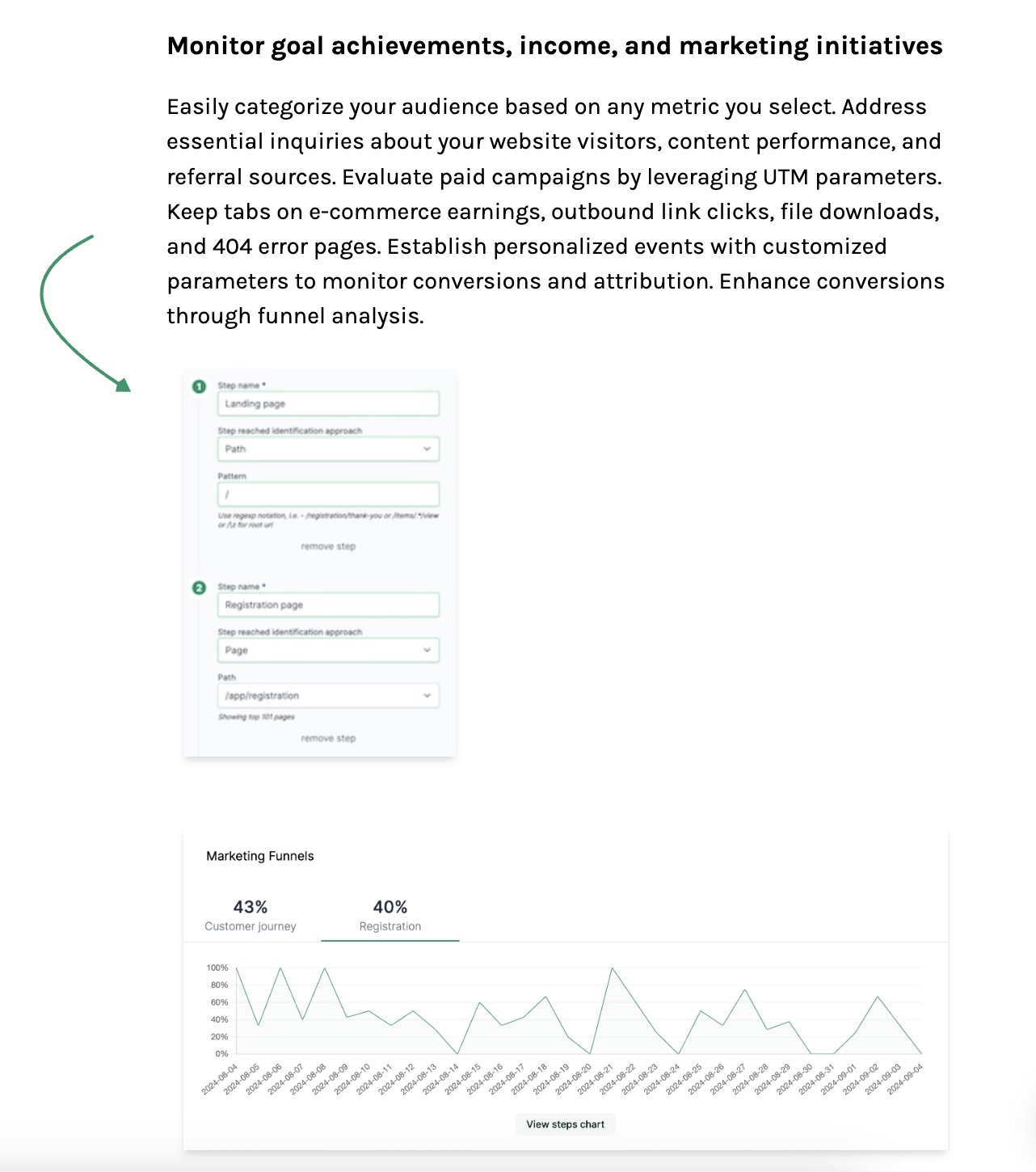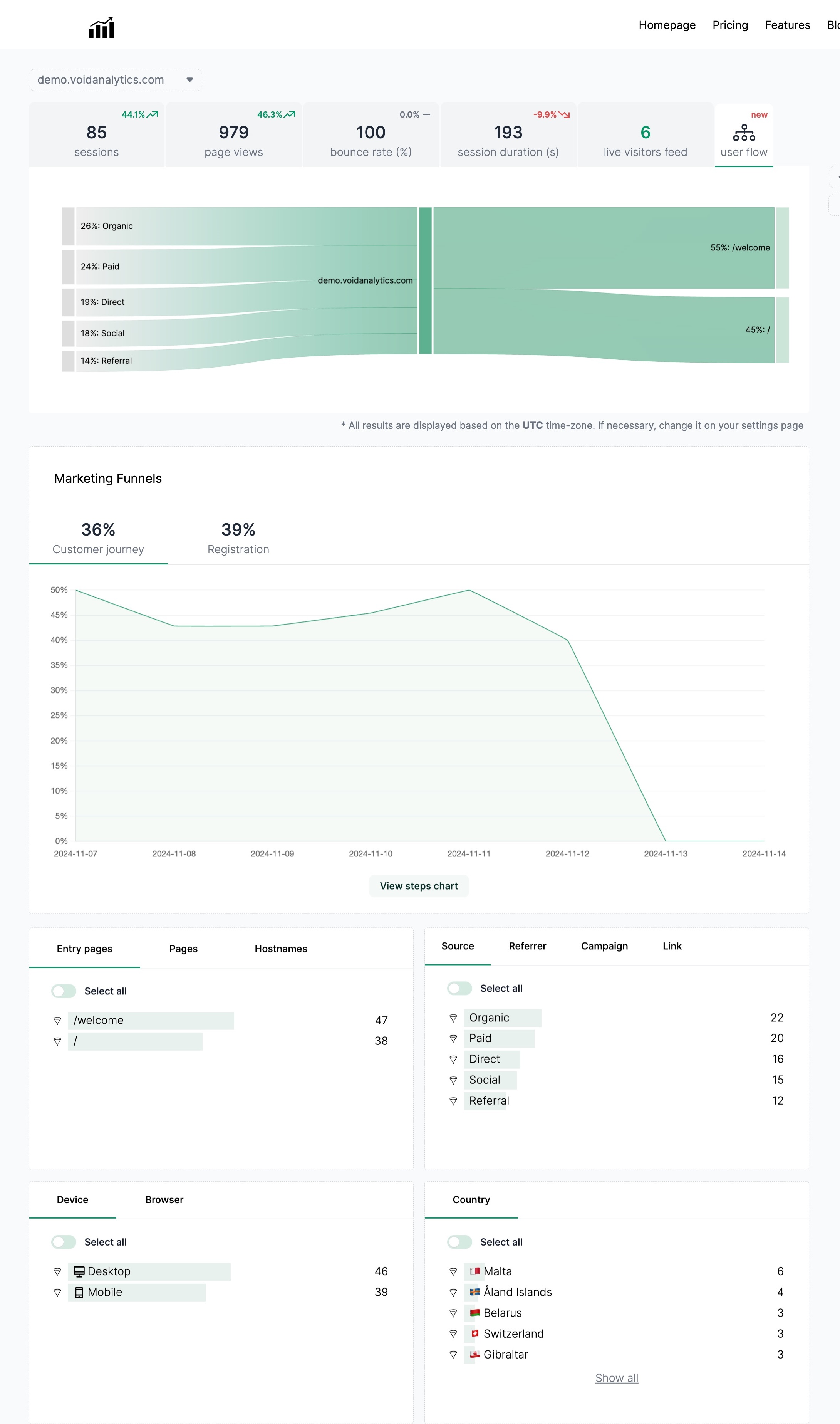Why You Should Choose Void Analytics Over GA4 for Setting Up Conversions
Published on 2024-03-14
Setting up conversions in GA4 (Google Analytics 4) can be a daunting task for many businesses. The process can be complex and time-consuming, leading to frustration and confusion. However, with Void Analytics, you can easily set up conversions without any hassle. In this blog post, we will guide you through the steps of setting up conversions in GA4 and explain why Void Analytics is a better alternative.
Setting Up Conversions in GA4
Setting up conversions in GA4 involves creating events that track specific actions users take on your website or app. These events can include button clicks, form submissions, page views, and more. By tracking these events, you can gain valuable insights into user behavior and optimize your marketing strategies.
To set up conversions in GA4, follow these steps:
Create an Event: In GA4, events are used to track user interactions. To create an event, go to the Events section in your GA4 property and click on "Create Event." Give your event a name and specify the parameters you want to track.
Set Up Goals: Goals in GA4 are specific actions you want users to take on your site, such as making a purchase or signing up for a newsletter. To set up goals, go to the Goals section in your GA4 property and click on "Create Goal." Choose the event you created as the goal and set the conditions for completion.
Track Conversions: Once you have set up events and goals, you can track conversions in the Conversions section of your GA4 property. Here, you can see the number of conversions, conversion rate, and other valuable metrics.
While setting up conversions in GA4 can be effective, many businesses find the process overwhelming. This is where Void Analytics comes in.
Why Choose Void Analytics
Void Analytics offers a simple and user-friendly platform for setting up conversions. With Void Analytics, you can easily track conversions without the complexity of GA4. Here are three key reasons why you should choose Void Analytics over GA4:
Simplicity: Void Analytics simplifies the process of setting up conversions, making it easy for businesses of all sizes to track user interactions. With Void Analytics, you can create events, set up goals, and track conversions with just a few clicks. The intuitive interface and step-by-step guides make it easy to navigate the platform and get the insights you need.
Privacy Friendly: Void Analytics prioritizes user privacy, ensuring that your data is secure and protected. Unlike GA4, which collects a large amount of data and may raise privacy concerns, Void Analytics only collects the data you need to track conversions. This commitment to privacy makes Void Analytics a trusted partner for businesses looking to prioritize data security.
Not Sampled Data: One of the drawbacks of GA4 is that it samples data, which can lead to inaccuracies in your conversion tracking. With Void Analytics, you get access to unsampled data, ensuring that you have accurate insights into user behavior. By using unsampled data, you can make informed decisions and optimize your marketing strategies with confidence.
In conclusion, setting up conversions in GA4 can be a complex and time-consuming process. However, with Void Analytics, you can easily track conversions without the hassle. By choosing Void Analytics, you get access to a simple and user-friendly platform that prioritizes privacy and provides unsampled data for accurate insights. Say goodbye to the confusion of GA4 and switch to Void Analytics for all your conversion tracking needs.
If you're ready to simplify your conversion tracking process, choose Void Analytics today. Visit our website to learn more about how Void Analytics can help your business succeed.

